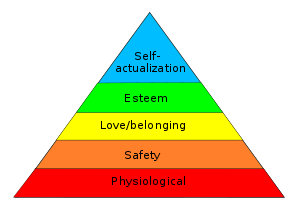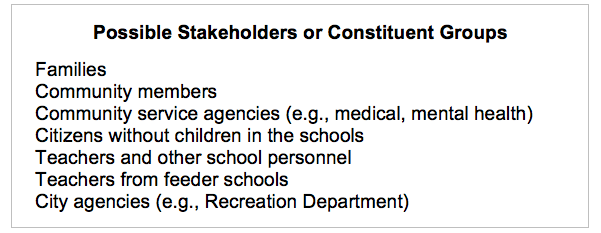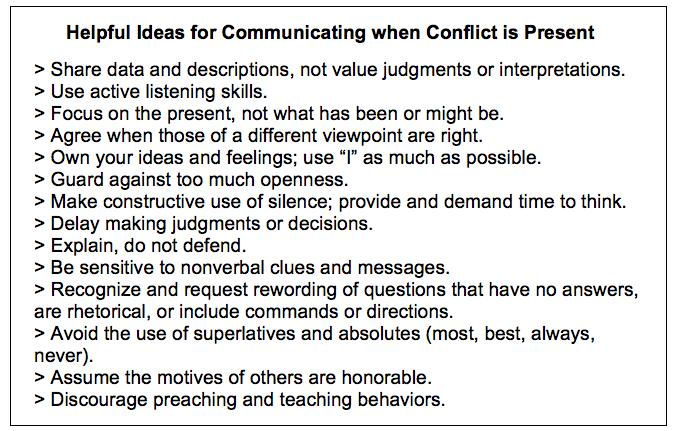How Principals Can Allay Resistance to Change
By Ronald Williamson and Barbara Blackburn
 There is an old saying, “The only person who likes change is a baby with a wet diaper.” As a school leader, you have likely dealt with someone who didn’t support a proposed change. They have been vocal about their concerns or even mounted a resistance.
There is an old saying, “The only person who likes change is a baby with a wet diaper.” As a school leader, you have likely dealt with someone who didn’t support a proposed change. They have been vocal about their concerns or even mounted a resistance.
However, one of your functions as a principal is to assure that your school serves every student and provides each one with a quality educational experience. Most often, that requires changes in practice.
Ways People Respond to Change
People respond to change in one of three ways. Some, about 5%, are early adopters who eagerly embrace almost any innovation. Another 5% will never support change; nothing can get them to embrace an innovation. The remainder includes people who can become supportive even if initially resistant. What they need is sufficient time and information.
This article will focus on that 90%. How can you, as a leader, help those who are reluctant to change become positive and supportive?
Reasons for Resisting Change
Think of the last time you wanted to implement a change in your school. You probably heard a variety of responses similar to the following.

Value and Success
Just as students ask, “Why do we need to learn this?” teachers ask, “Why do we need to do this?” The question may be spoken or unspoken, directed to you or discussed in the teachers’ lounge, but it is always a factor in any proposed change. To support an innovation, teachers must understand the value of doing things differently.
The second facet of resistance is the desire to succeed. Most people have high need to feel competent, and they believe they are successful in their current work. Change is viewed through a personal lens as individuals assess their ability to be successful once the change is implemented. Thus it’s important to provide appropriate support to help individuals develop the skills and competency for success with new innovation.
How to Respond
Despite the appearance of stubbornness, most people don’t resist just to resist; they resist because they lack information about an innovation or because they don’t have adequate time to explore it and ultimately embrace it. Time and information are the two keys to overcoming resistance.
First, you must provide time for most of those involved to adopt and learn about the new innovation. Second, you will need to provide sufficient information about how the innovation will impact people’s work. Remember, everyone needs to feel successful. Five strategies are available to smooth the transition and overcome the resistance to change.
Strategy 1: Build Relationships and Involve People
The first strategy is to build relationships with all stakeholders and involve them in the proposed change. During this step, it’s important to identify everyone who will be affected by the change. It’s easy to overlook someone who is not directly involved in a project but whose support will be critical in the future. Ensure their cooperation by involving them early.
Strategy 2: Establish a Common Base of Information
As you work with constituent groups, establish a common base of information about the proposed change. A stumbling block is often the lack of information (what it is, how it happens, why it makes a difference). Therefore, be sure everyone has a sufficient knowledge base to discuss and move ahead with the project.

While a shared knowledge base is critical, it’s also important to recognize that there may be different points of view on an innovation or conflicting research about its success. Always acknowledge those differences. Such acknowledgement builds credibility and trust.
Strategy 3: Provide a Clear, Concrete Result
This strategy is often assumed and therefore is often overlooked. In order to overcome resistance to change, teachers need to see a clear, defined outcome. Teachers are results-oriented. You should always be able to answer one question: “If we are successful implementing _____________, we will know it because we will see _______________.” In other words, what would success look like?
This does not mean you must develop the vision yourself without any input; the most lasting visions are shared ones. However, for any proposed change, it is important to have a clear vision, and share that vision with all constituent groups.
Strategy 4: Build a Structure to Support Success
Building a structure that supports success does not mean you must know every step prior to the innovation. However, you do need a process to clearly identify each step, a proposed time frame, roles and responsibilities, and needed resources. Using a chart of roles and responsibilities is helpful to ensure that everyone understands each step and his or her role in the process.
Remember that your structure should incorporate the elements of value and success, such as providing appropriate and abundant professional learning opportunities that will help teachers feel more successful with the proposed change.
Strategy 5: Focus and Refocus the Conversation

It’s normal during change for people to revert to lower levels of Maslow’s hierarchy and think about their own needs for success. In this instance, the group had already developed a solution to both those issues, but the two teachers continued to complain.
The principal reminded the group of the rationale for the remediation classes: to positively affect student learning for their neediest students, particularly second-language learners, by providing additional time for learning. She reframed the conversation, and the group was able to move forward.
It’s not enough to establish a vision for change, you must continually keep that vision as a focus. And at times, you will need to use the vision to refocus the conversation.
A Final Note
Remember that overcoming resistance to change is possible. The vast majority of teachers can and will respond appropriately if they see the value of the innovation and if they believe they will be successful. The role of a school leader is to help them do so.
________________________________________





































Love this post! I think that, in part, there is resistance to change because far too often it is done without a real reason. A teacher said to me the other day, “Are we doing this just to change or because you think it will really help?” We have to be careful that when we ask teachers to change there is a real reason and that we can make that reason clear. Thanks again for a wonderful post!
Thanks for the post, it is a real help for me in my study